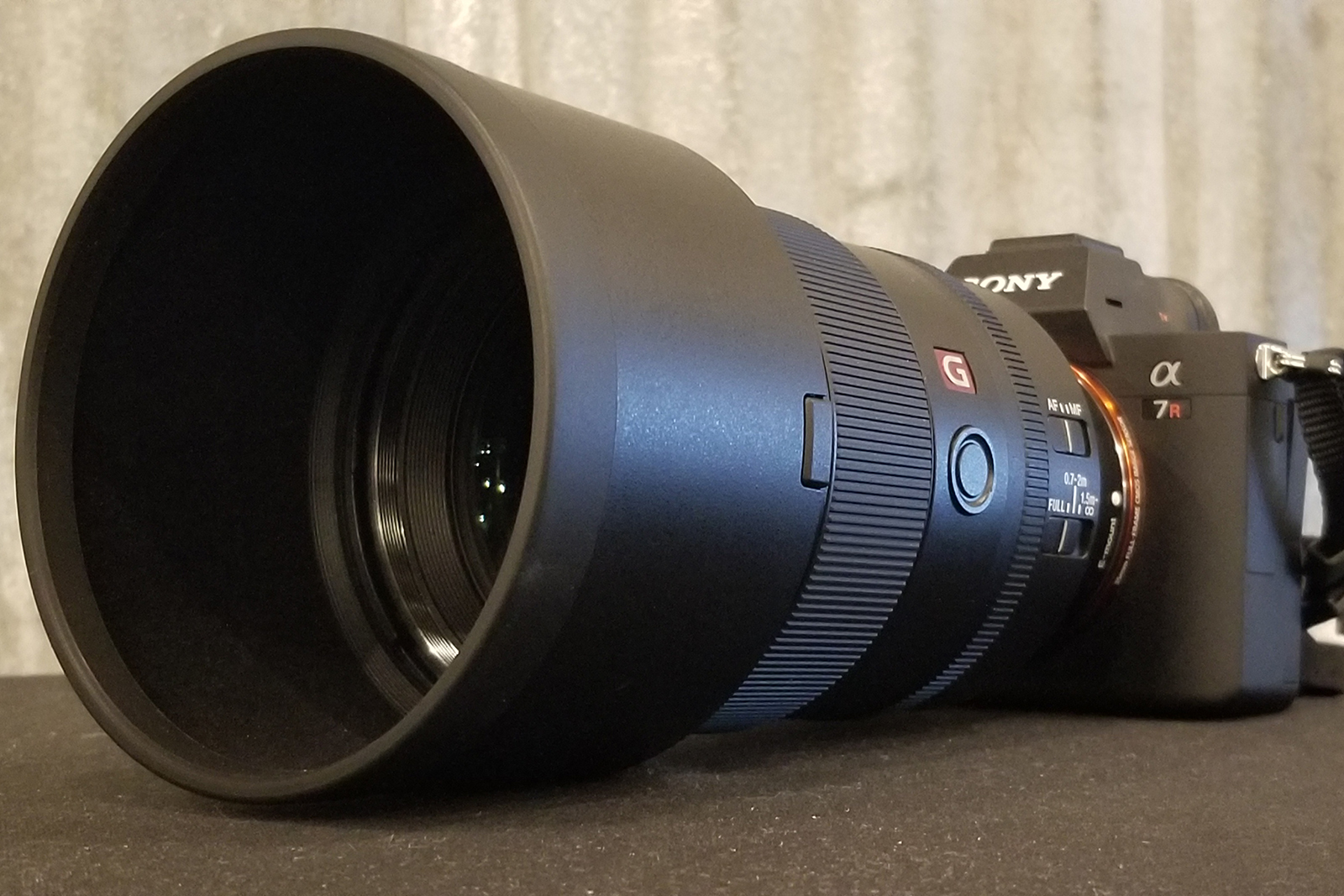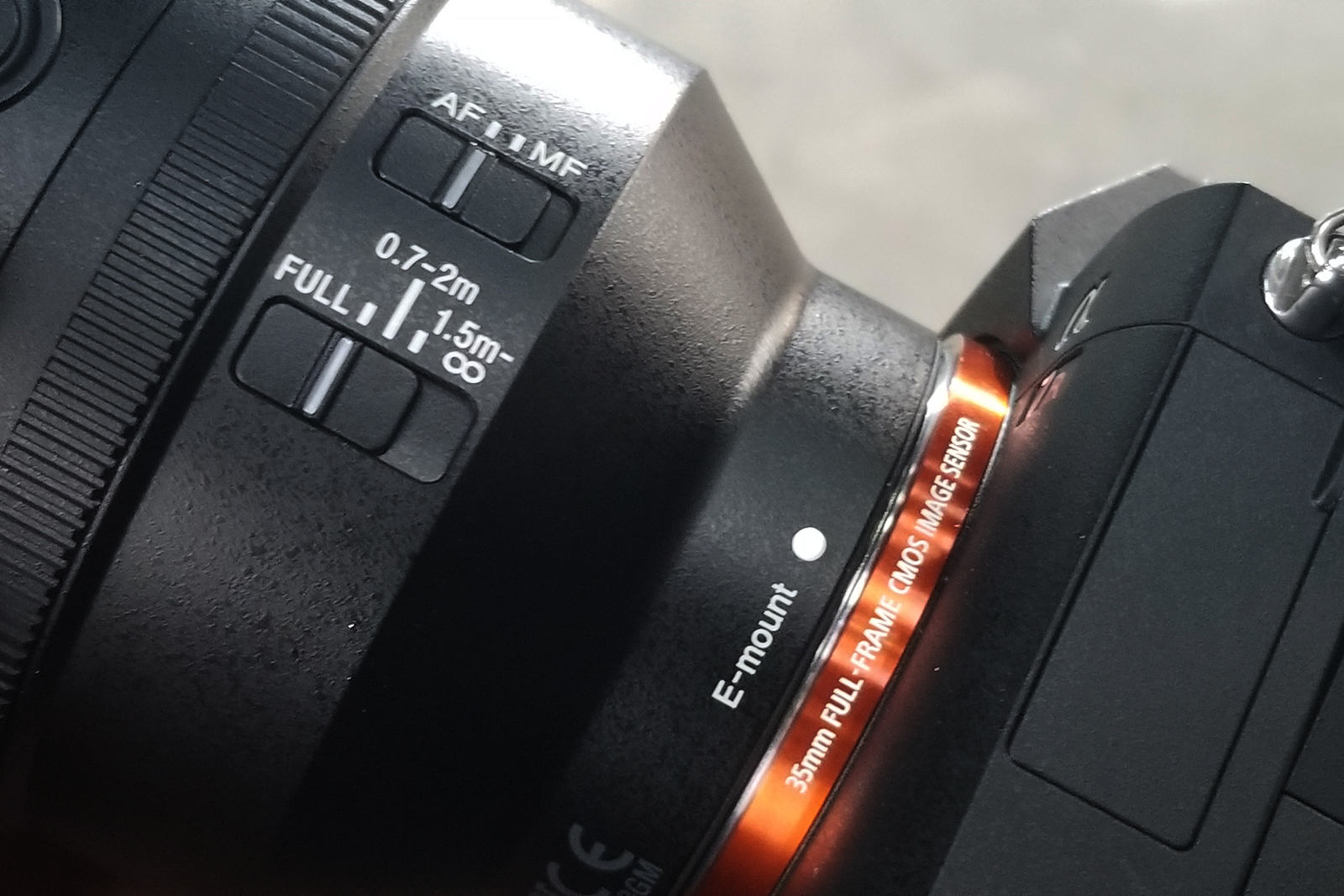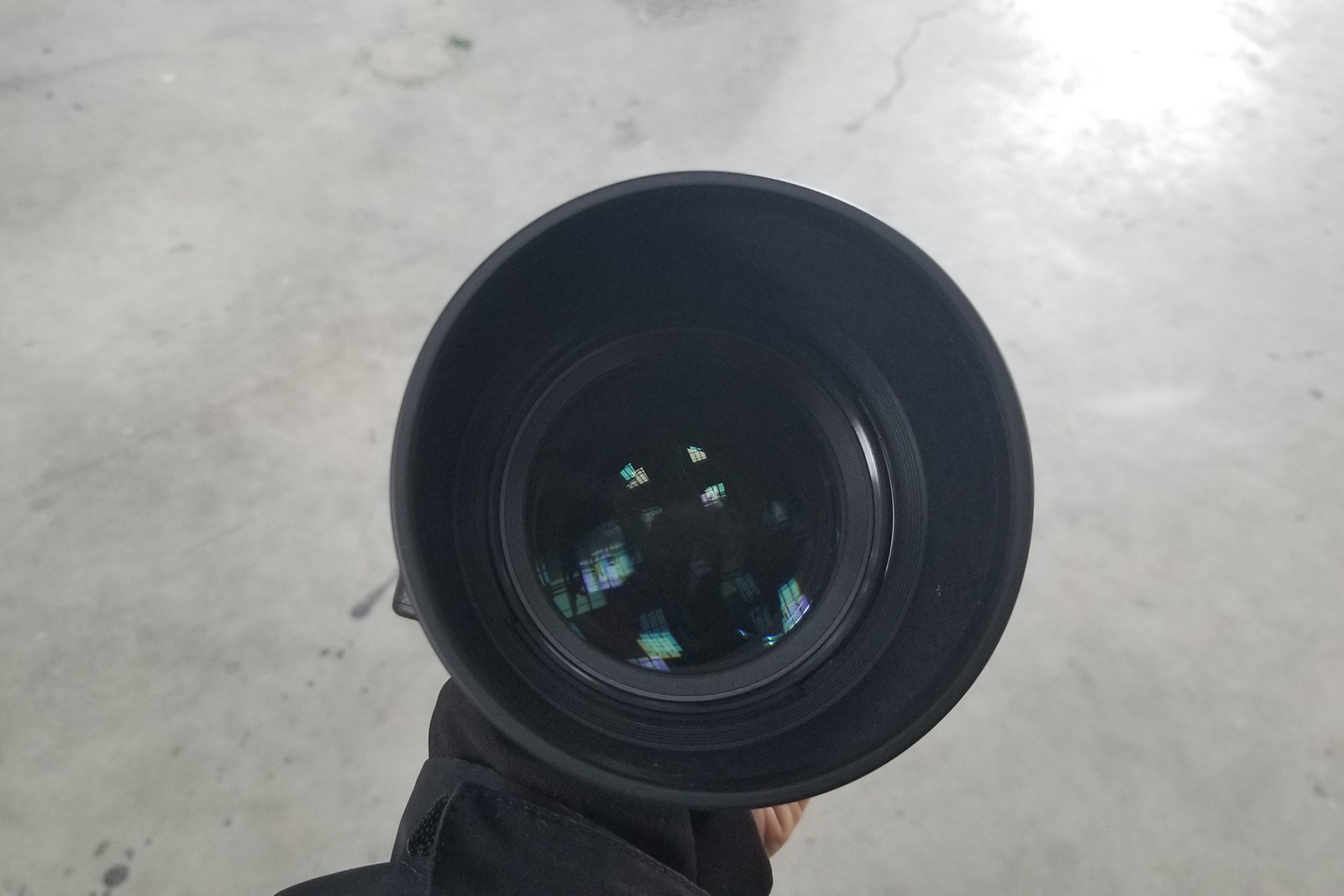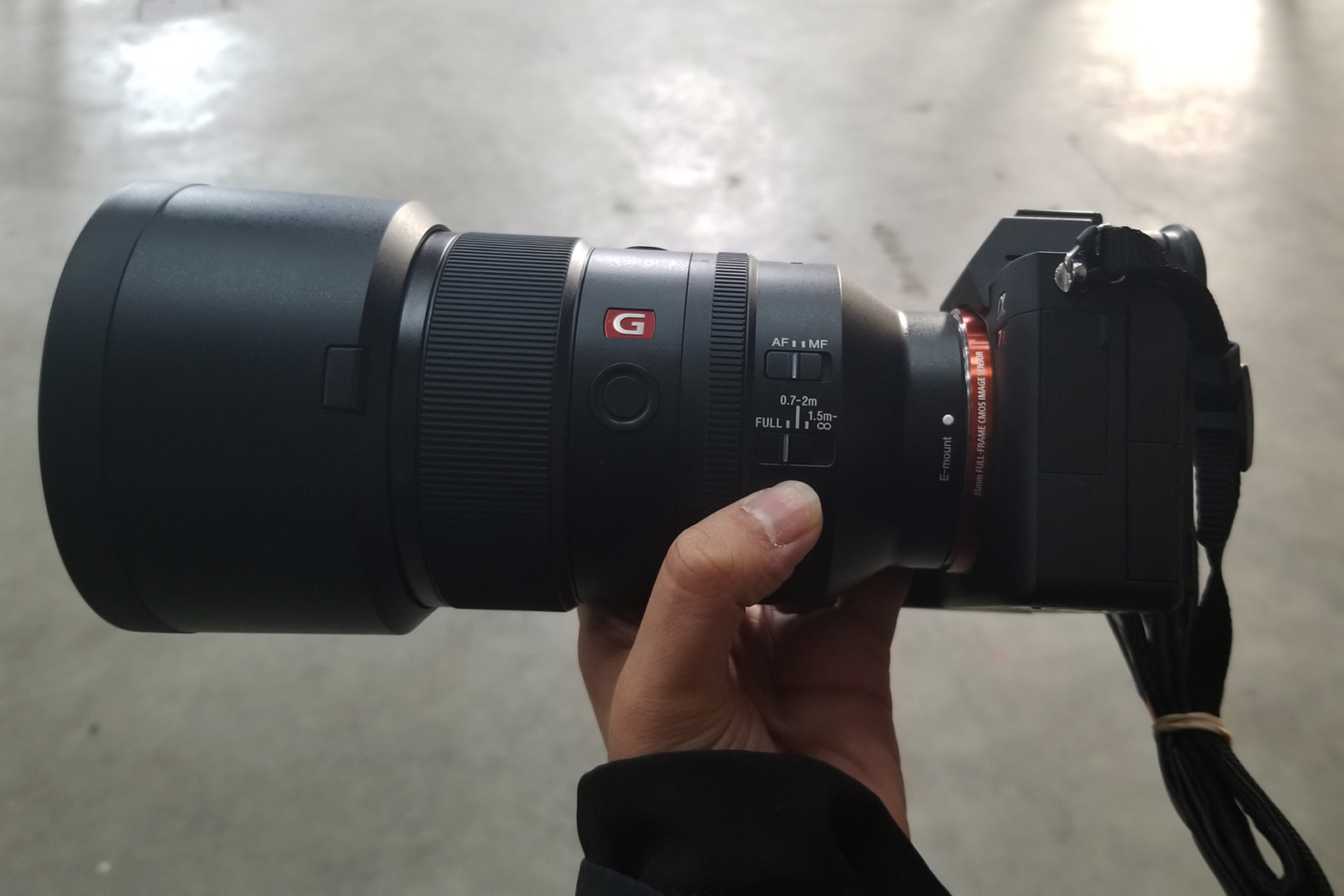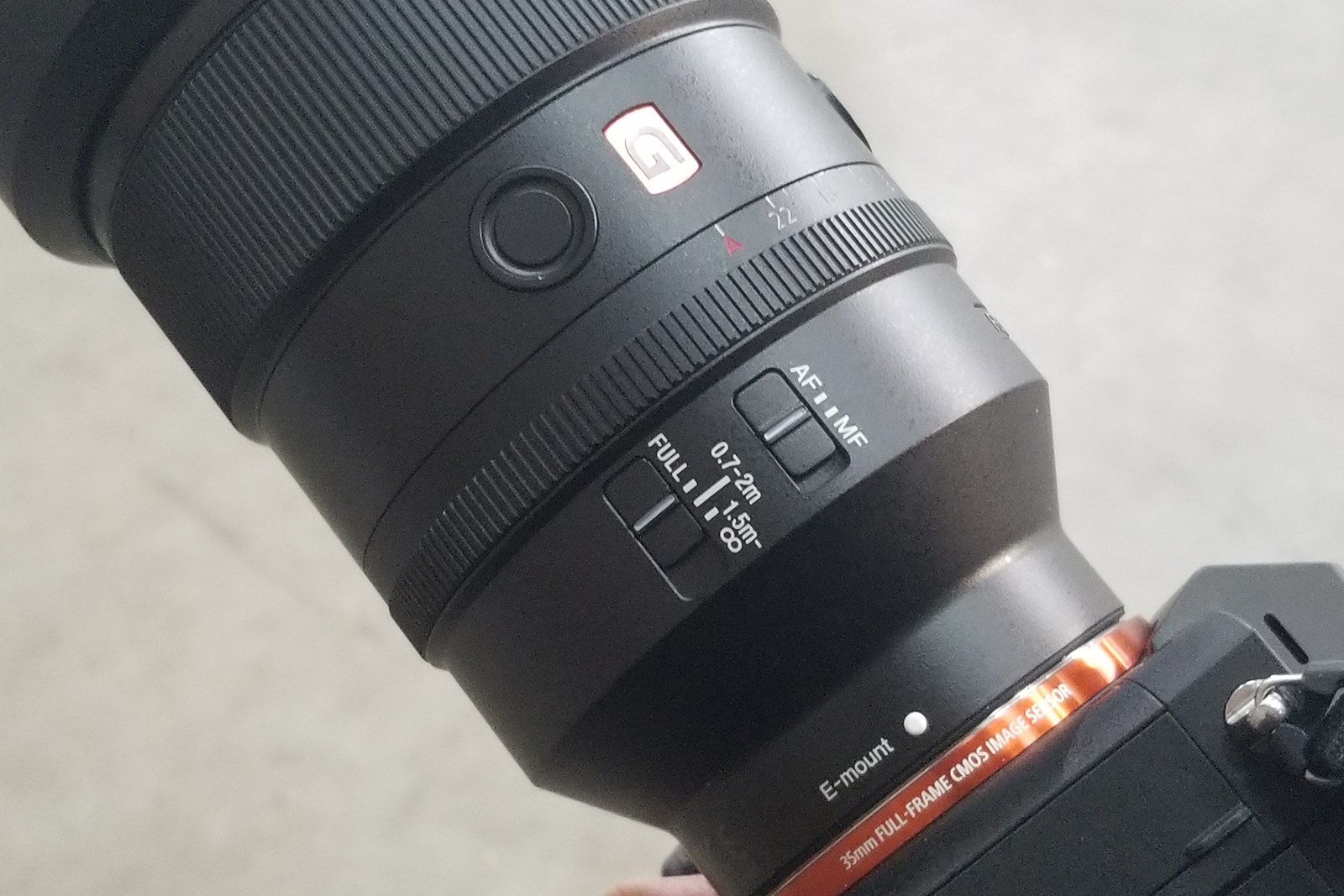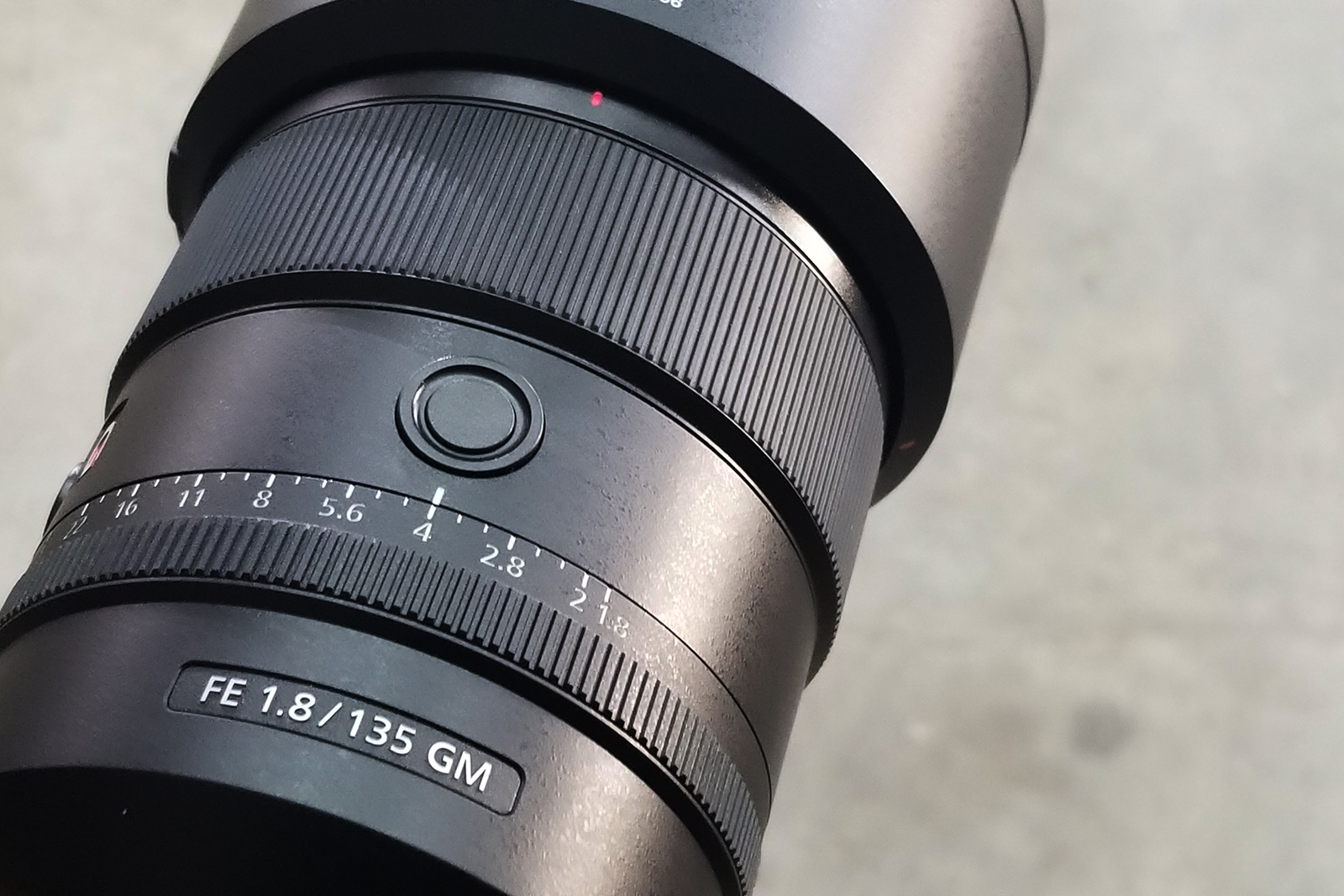Sony’s newest lens in its high-performance G Master line is a classic telephoto portrait lens promising edge-to-edge sharpness and beautiful bokeh. Unveiled on Tuesday, February 26, the FE 135mm f/1.8 GM is a full-frame E-mount prime lens that, in addition to portraiture, is designed to handle indoor sports, close-up photography, and video work. The company today also announced new circular polarizing filters, designed to preserve image quality better than Sony’s existing options.
The new 135mm lens is built with 13 glass elements in 10 groups, including an XA element and Super ED glass designed to realize the potential of the latest high-resolution cameras. Sony says the design allows the lens to maintain sharpness and contrast even towards the edges of an image better than similar competing lenses.
The medium telephoto focal length and bright, f/1.8 aperture work together for smooth, defocused backgrounds to clearly separate a subject from the environment, but Sony has gone a step further by increasing the number of aperture blades to 11. That means rounder blur circles even at smaller apertures, which is generally considered to be a more natural look. (Most photography lenses have between seven and nine blades.) Sony also integrated extreme aspherical elements into the lens to prevent “onion ring bokeh,” where blur circles have distinct layers within them rather than a uniform or smoothly faded appearance.
The lens uses an internal floating focusing mechanism. Inside the lens, two separate focus groups, which can also operate independently, move together to lock focus. Sony says the two XD (extreme dynamic) linear motors allow the lens to focus quickly and precisely. For video, the focusing system also allows for quiet performance without vibration or focus breathing. Focus breathing is the phenomenon of the field of view of the lens actually changing slightly as the focus is changed, something that matters little for still photography but can be distracting in video.
Also of importance to video shooters, an aperture click switch allows users to enable or disable click stops when using the aperture ring. When disabled, the aperture becomes infinitely variable like that of a cinema lens, providing smooth exposure adjustments while filming. A linear-response manual focus ring rounds out the video-specific focus features.
The unique design of the focusing system also allows the lens to focus closer than similar 135mm lenses, from as little as 2.3 feet away. With the 135mm focal length, that allows for a 0.25x magnification. Additionally, a focus range limiter can be used to maximize speed when the full focusing range is not needed. Two customizable focus hold buttons can also be custom-set to different controls.
While a 135mm lens isn’t going to be lightweight and compact, Sony says the new lens has an edge on the competition in size as well. The lens weighs about 33.5 ounces and has a 5-inch-long barrel, making it about six ounces lighter than the Sigma 135mm f/1.8 Art, one of our favorite portrait lenses. All of Sony’s G Master lenses are also sealed against dust and moisture.
Sony says the new line of circular polarizing filters pair well with G Master lenses. The company says the polarizers preserve image quality better than the previous line. Available in sizes 49mm, 55mm, 62mm, 67mm, 72mm, 77mm, and 82mm, the filters are designed to be slim while using a Zeiss coating to minimize flaring.
The lens is expected to ship by the end of April for about $1,900. The filters retail between $100 and $230, depending on the size.
